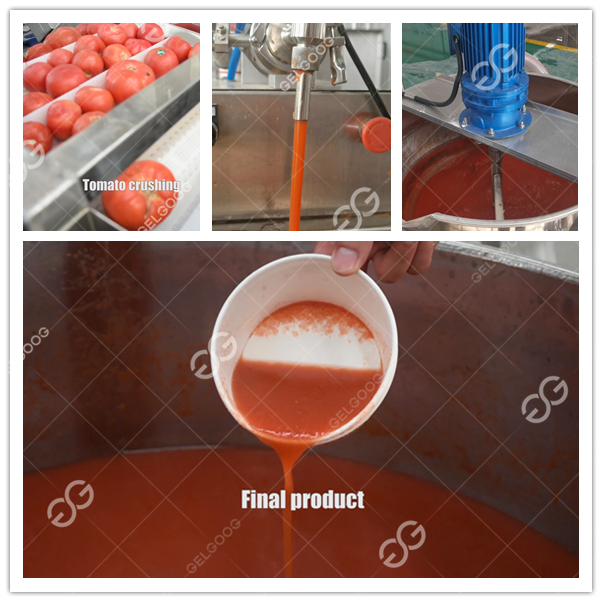Key Points Of Automatic Tomato Paste Production Technology
 Nov 17 2022
By admin
Nov 17 2022
By admin
Tomato sauce is a common condiment in daily life. It has the unique flavor of tomato. It not only tastes very unique, but also has the effects of promoting appetite, anti-radiation, protecting cardiovascular, and beautifying the skin. Tomato sauce is delicious, sweet and sour, and can be used to match a variety of ingredients. Tomato sauce also has high nutritional value and can provide a variety of nutrients needed by the human body. The tomato paste we buy every day is generally processed on the production line. Today, combined with the technological process of the tomato paste production line, the technical points of each stage of automatic tomato paste production are analyzed one by one.

1. Raw Tomato Acceptance
According to the requirements of processing special varieties, remove the damaged and insufficiently ripe tomatoes. If the coloring is uneven and the specific gravity of the fruit is light, it needs to be removed during cleaning.
2. Pick the fruit And Remove the Stalks
When cleaning tomatoes, first soak and clean them with a bubble cleaner, and then spray them with water to ensure that the tomatoes are cleaned. The stalks of the tomatoes need to be removed to enhance the flavor of the tomato sauce.
3. Broken and Seeded
Crushing means that it is heated quickly and evenly during precooking, and removing seeds is to prevent the seeds from being broken during beating. If mixed into the pulp, the flavor, texture and taste of the product will be affected. Crush and remove seeds with a crusher, and then go through a rotary separator and a seed remover for seed removal.
4. Precooked Beating
Precooking is to quickly heat the crushed and seeded tomato puree to 85°C-90°C to inhibit the activity of pectinase and lacturonidase, so as to avoid reducing the price and denaturation of pectin substances, thereby reducing the viscosity of the sauce. consistency. The material is beaten into pulp by the high-speed rotary scraper in the beater.
5. Deployment and Concentration
According to the type and name of ketchup, different concentrations of sauce are required. It is a product directly concentrated from the raw pulp after beating. Atmospheric pressure concentration means that the material is boiled in an open jacketed pot. Vacuum concentration means that the material is concentrated under a vacuum state of 600mm-700mm, and the temperature of the material is 50°C-60°C. The color and flavor of the product are good, but the investment in equipment is expensive. The concentration end point of tomato paste is determined by a refractometer, and the concentration can only be terminated when the measured product concentration is 0.5%-1.0% higher than the specified standard.
6. Heating Filling
The concentrated sauce body must be heated to 90°C-95°C and then filled into cans. The containers include tinplate cans, toothpaste-shaped plastic bags, glass bottles, etc. Immediately after filling the can, it is ventilated and sealed.
7. Sterilization and Cooling
The sterilization temperature and time are determined according to the heat transfer performance of the packaging container, the filling capacity and the concentration rheology of the sauce. After sterilization, tinplate cans and plastic bags are directly cooled with water, while glass bottles should be cooled gradually and segmented to prevent the container from breaking.
No matter what kind of processing technology, no matter what output, our company can tailor tomato paste processing solutions according to customer needs. Pay full attention to the finished product quality and processing efficiency of tomato paste, reduce the consumption of materials and water and electricity, reduce the use of labor, and strive to make the whole production line solution competitive.
If you want to obtain competitive and exclusive tomato paste processing solutions, please feel free to call us.

